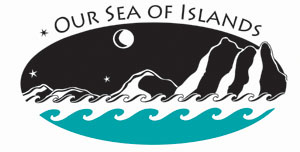
The first day of the last week was an experience with geography, social constructs, and space. Prior to the beginning of the session we acknowledged the space we’ve been settling on within the indigenous territory of California. This entire session was fascinating to me because of the social constructs and idea of history and naturalism that envelop so much of geography but also the social sciences. We explored the frames of space and how spatial organization and structures play a role in conflict resolution and peacebuilding. During this whole session I became really interested in different conceptualizations of space and how that conceptualization influences a group’s worldview and culture. And of course, I brought it back to myself and it highlighted a lot of the reasons I am doing what I’m doing.
![]()
This past year, as I’ve continued my self-decolonizing journey I have become more aware of my conceptualization and utilization of space. During our session Professor Herb introduced to our cohort the concept of framing locations and people based on the space they inhabit. The concept of a spatial barriers are physical and non-physical and are used to isolate or separate communities from each other or from themselves. This really related to the essay I read in the spring by Epeli Hau’Ofa, an Oceania scholar and author of “Our Sea of Islands”. In it, Hau’Ofa compares the western and indigenous frameworks of space, and how much your conception of space influences your conception about relationships to other things within that space. In western society, the phrase and concept that is used more often than not when talking about Oceania is “the Pacific”. The Pacific, from a colonial framework, defines the space from a bird’s eye view as islands in a sea. The conceptualization of space becomes what is inhabitable and what can be utilized, and becomes measured by the amount of land available within the Pacific. This conceptualization leads to the mindset and assumption of isolation, of smallness, of dependency – small islands surrounded by big sea cannot develop, the primary challenge is isolation, the region is then carved to gravitate small islands towards larger powers, is dependent on larger nations for support and necessities. Over the last few years, I have begun to actively stop using the word “Pacific” when describing or locating my people or region, because to me, it’s only reinforcing the historical colonial narrative of smallness and isolation and need to anchor to the big fish along the rim. From the perspective of indigenous Oceania, the opposite is actually the case. Oceania, a term that to me represents the indigenous conceptualization of the region’s space, sees the region not as islands in a sea but as a sea of islands, and the distinction to me is a powerful one. Oceania was peopled and settled by voyagers who had understanding of the currents and pathways within the region, and used it to create a wide and complex network of culture, trade, and community over thousands of years. Thousands of islands connected by currents. The island does not end with visible land, but continues through the networks and connects all the lands and people together, creating what Hau’Oli refers to as “the Blue Continent”. This conceptualization of space that does not end with the land of the islands re-frames the narrative of islands as small and isolated and dependent towards one that is connected, vibrant, sustainable, and developed.
We use space in settler colonial societies to frame resources towards the benefit of the settler, to erase and separate communities that for generations have interacted with each other in different forms and outlets. As I continue with my time in a colonized space on a settled land within the framework of a system of settler colonialism, being able to identify the barrier spaces, whether they are physical like the fences and gates that run through communities and indigenous lands, to the nonphysical such as the carving of Oceania on a map, is so important and critical as I develop my own perception and identity within conflict resolution and peacebuilding.

